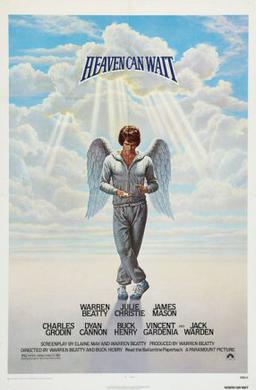
Heaven Can Wait is a 1978 American sports fantasy comedy-drama movie directed by Warren Beatty and Buck Henry about a young man being mistakenly taken to heaven by his guardian angel, and the resulting complications of how this mistake can be undone, given that his earthly body has been cremated. It was the second film adaptation of Harry Segall's play of the same name, the first being Here Comes Mr. Jordan (1941).

Charles Bronson was an American actor. He was known for his roles in action films and his "granite features and brawny physique". Bronson was born into extreme poverty in Ehrenfeld, Pennsylvania, a coal mining town in the Allegheny Mountains. Bronson's father, a miner, died when Bronson was young. Bronson himself worked in the mines as well until joining the United States Army Air Forces in 1943 to fight in World War II. After his service, he joined a theatrical troupe and studied acting. During the 1950s, he played various supporting roles in motion pictures and television, including anthology drama TV series in which he would appear as the main character. Near the end of the decade, he had his first cinematic leading role in Machine-Gun Kelly (1958).

Class is a 1983 American comedy-drama film directed by Lewis John Carlino, starring Rob Lowe, Jacqueline Bisset, Andrew McCarthy, and Cliff Robertson. In addition to being Lowe's second film, it marked the film debuts of McCarthy, John Cusack, Virginia Madsen, Casey Siemaszko, and Lolita Davidovich.

Gross Anatomy is a 1989 American medical comedy-drama film directed by Thom Eberhardt from a screenplay by Ron Nyswaner and Mark Spragg. The film stars Matthew Modine, Daphne Zuniga, and Christine Lahti.
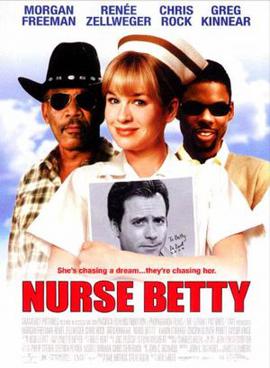
Nurse Betty is a 2000 American black comedy film directed by Neil LaBute and starring Renée Zellweger as the title character, a small town, Kansas housewife-waitress who suffers a nervous breakdown after witnessing her husband's torture murder, and starts obsessively pursuing her favorite television soap opera character, while in a fugue state. Morgan Freeman and Chris Rock play the hitmen who killed her husband and subsequently pursue her to Los Angeles.
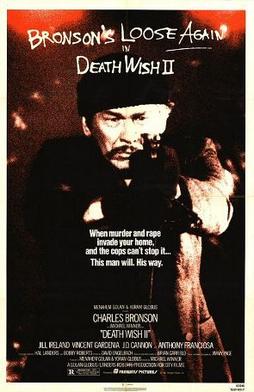
Death Wish II is a 1982 American vigilante action-thriller film directed and co-edited by Michael Winner. It is the first of four sequels to the 1974 film Death Wish. It is the second installment in the Death Wish film series. In the story, architect Paul Kersey moves to Los Angeles with his daughter. After his daughter is murdered at the hands of several gang members, Kersey once again chooses to become a vigilante. Unlike the original, in which he hunts down every criminal he encounters, Kersey only pursues his family's attackers. The sequel makes a complete breakaway from the Brian Garfield novels Death Wish and Death Sentence, redefining the Paul Kersey character. It was succeeded by Death Wish 3.
Lisa Marie Eilbacher is a retired American actress. She is best known for her role as Jeanette Summers in the Beverly Hills Cop film in 1984.

52 Pick-Up is a 1986 American neo-noir crime film directed by John Frankenheimer and starring Roy Scheider, Ann-Margret, and Vanity. It is based on Elmore Leonard's 1974 novel 52 Pickup and is the second adaptation of it after The Ambassador (1984).
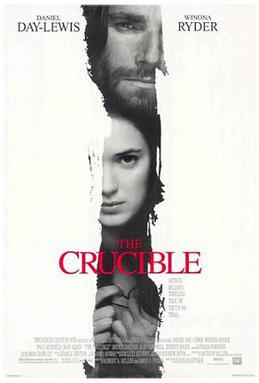
The Crucible is a 1996 American historical drama film directed by Nicholas Hytner and written by Arthur Miller, based on his 1953 play. It stars Daniel Day-Lewis as John Proctor, Winona Ryder as Abigail Williams, Paul Scofield as Judge Thomas Danforth, Joan Allen as Elizabeth Proctor, Karron Graves as Mary Warren, and Bruce Davison as Reverend Samuel Parris. Set in 1692 during the Salem witch trials, the film follows a group of teenage girls who, after getting caught performing a ritual in the woods, band together and falsely accuse several of the townspeople of witchcraft.

A Night in Heaven is a 1983 American romantic drama film directed by John G. Avildsen, starring Christopher Atkins as a college student and Lesley Ann Warren as his professor. The film's screenplay was written by Joan Tewkesbury. Film critics widely panned the film, but the film itself became better known for Bryan Adams' chart-topping single "Heaven".

Bolero is a 1984 American romantic drama film written and directed by John Derek and starring Bo Derek. The film centers on the protagonist's sexual awakening and her journey around the world to pursue an ideal first lover who will take her virginity.
Pic 'N' Save Corporation was at one time the second-largest closeout retail chain in the United States. Financial troubles caused the chain to close many stores in the late 1990s and early 2000s.
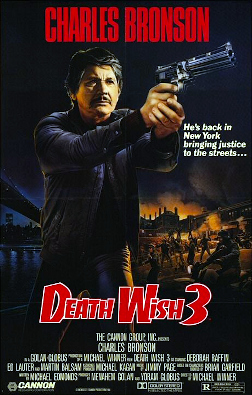
Death Wish 3 is a 1985 American vigilante action-thriller film directed and edited by Michael Winner. It is the third film and the last to be directed by Winner in the Death Wish film series. It stars Charles Bronson as the vigilante killer Paul Kersey and sees him battling with New York street punk gangs while receiving tactical support from a local NYPD lieutenant. Despite being set in New York City, some of the filming was shot in London to reduce production costs. It was succeeded by Death Wish 4: The Crackdown.

Firewalker is a 1986 American action-adventure comedy film starring Chuck Norris, Louis Gossett Jr., Will Sampson in his final feature film role, and Melody Anderson. It was directed by J. Lee Thompson and written by Norman Aladjem, Robert Gosnell and Jeffrey M. Rosenbaum.

Private School is a 1983 American teen sex comedy film, directed by Noel Black. Starring Phoebe Cates, Betsy Russell, and Matthew Modine, it follows a teenaged couple attempting to have sex for the first time, while their friends engage in sexually minded practical jokes.

Murphy's Law is a 1986 American neo-noir action thriller film directed by J. Lee Thompson from a screenplay by Gail Morgan Hickman. It was released by Cannon Films to the United States on April 18, 1986. The film stars Charles Bronson and Kathleen Wilhoite in lead roles with a supporting cast that includes Carrie Snodgress, Robert F. Lyons, and Richard Romanus. The film marks the sixth collaboration between Bronson and director J. Lee Thompson.
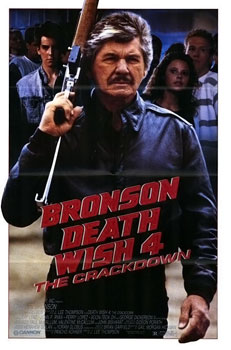
Death Wish 4: The Crackdown is a 1987 American vigilante action-thriller film, and the fourth installment in the Death Wish film series. The film was directed by J. Lee Thompson, and features Charles Bronson, who reprises his leading role as Paul Kersey. In the film, Kersey is once again forced to become a vigilante after his girlfriend's daughter dies of a drug overdose. He is recruited by a tabloid owner, Nathan White, to take down various crime figures of the Los Angeles drug trade.

Assassination is a 1987 American action thriller film directed by Peter Hunt and starring Charles Bronson, Jill Ireland, Charles Howerton, Jan Gan Boyd, Stephen Elliott, and Chris Alcaide. The plot is about a bodyguard who is assigned to protect the First Lady of the United States against an assassination plot.
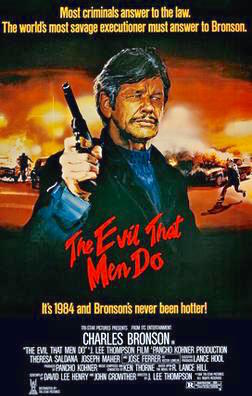
The Evil That Men Do is a 1984 American action thriller film directed by J. Lee Thompson and starring Charles Bronson, Theresa Saldana, Joseph Maher and José Ferrer. The film is adapted by R. Lance Hill and John M. Crowther from Hill’s 1978 novel of the same title. It was produced by ITC Entertainment and released by Tri-Star Pictures on September 21, 1984.
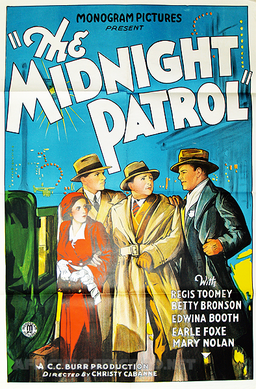
The Midnight Patrol is a 1932 American pre-Code drama film, directed by Christy Cabanne. Written by George Jeske (screenplay) and Arthur Hoeri (story), it stars Regis Toomey, Betty Bronson, and Edwina Booth, and was released on April 10, 1932.


















